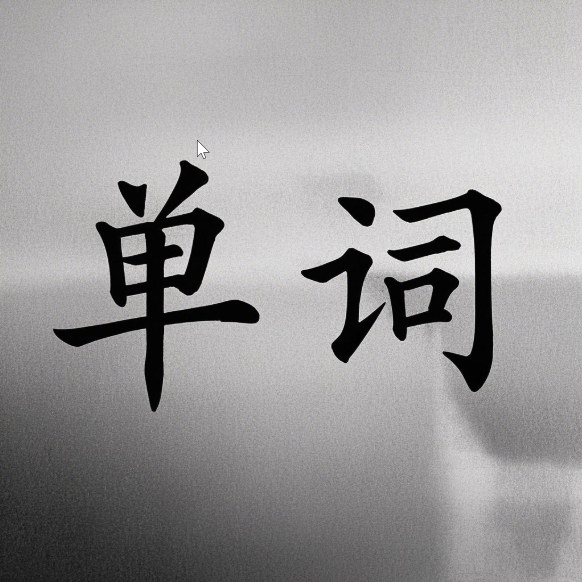ozonization
简明释义
英[ˌəʊzənaɪˈzeɪʃən]美[ˌozənɪˈzeʃən]
n. 臭氧化
英英释义
The process of treating a substance with ozone, often used for disinfection or to enhance chemical reactions. | 用臭氧处理物质的过程,通常用于消毒或增强化学反应。 |
单词用法
臭氧化过程 | |
臭氧化反应 | |
臭氧化条件 | |
进行臭氧化 | |
臭氧化的应用 | |
臭氧化的效果 |
同义词
| 臭氧分解 | Ozonolysis is often used in organic chemistry to cleave double bonds. | 臭氧分解常用于有机化学中以断裂双键。 | |
| 臭氧化 | Ozonation is a common process in water treatment to remove contaminants. | 臭氧化是水处理中的一种常见过程,用于去除污染物。 |
反义词
| 去臭氧化 | Deozonization is a process used to remove ozone from the air. | 去臭氧化是用来去除空气中臭氧的过程。 | |
| 还原 | 还原反应通常涉及电子的获得。 |
例句
1.The ultrasound degradation and ozonization degradation can enhance each other.
超声强化与臭氧氧化联合有一定的协同作用。
2.The initial concentration of phenol solution has effect on the ultrasound enhancement ozonization. The COD removal efficiency decreased with increasing of the initial concentration.
苯酚溶液的初始浓度对超声强化奥氧氧化有比较明显的影响,随着苯酚初始浓度的增大,超声强化臭氧氧化对其COD的降解率降低。
3.The research on ozonization catalyzed by transitional metal oxides in homogeneous and heterogeneous systems in water treatment in recent years is reviewed.
介绍了近年来均相和异相催化臭氧化去除水中有机物的研究。
4.But the degradation by ozonization cannot be completely.
但单一臭氧氧化不能使反应进行彻底。
5.The disinfection effects of ozonization and its influences on chemical components of mineral water were investigated.
初步研究了臭氧对矿泉水中细菌的杀灭效果及臭氧对矿泉水化学成分的影响。
6.The research is about two parts, ozonization and ultrasound enhancement ozonization to degrade wastewater with phenol of high concentration.
研究内容包括两个部分:单一臭氧强化处理及超声臭氧强化降解高浓度苯酚废水。
7.The article is mainly about the study on the feasibility and mechanism of the treatment with ultrasound enhancement ozonization to organic wastewater.
本文主要研究了超声臭氧处理高浓度有机废水的可行性及其作用机理。
8.Several key problems of pre ozonization are summarized and discussed.
综述了原水预臭氧化技术的几个热点问题。
9.The initial concentration of phenol solution has effect on the ultrasound enhancement ozonization. The COD removal efficiency decreased with increasing of the initial concentration.
苯酚溶液的初始浓度对超声强化奥氧氧化有比较明显的影响,随着苯酚初始浓度的增大,超声强化臭氧氧化对其COD的降解率降低。
10.Research shows that ozonization can effectively reduce odors in food processing.
研究表明,臭氧化可以有效减少食品加工中的气味。
11.The ozonization technique is essential for producing certain pharmaceuticals.
该臭氧化技术对于生产某些药物至关重要。
12.Industries utilize ozonization to purify air by breaking down harmful pollutants.
工业界利用臭氧化通过分解有害污染物来净化空气。
13.The process of ozonization is often used in water treatment to remove contaminants.
在水处理过程中,臭氧化常用于去除污染物。
14.During the ozonization of organic compounds, ozone reacts with double bonds to form ozonides.
在有机化合物的臭氧化过程中,臭氧与双键反应形成臭氧化物。
作文
Ozonization is a chemical process that involves the treatment of substances with ozone, a powerful oxidizing agent. This process has gained significant attention in various fields, including environmental science, water treatment, and organic chemistry. The application of ozonization (臭氧化) can lead to the breakdown of pollutants and the enhancement of chemical reactions, making it an essential tool for researchers and industries alike.In environmental science, ozonization (臭氧化) plays a crucial role in air and water purification. Ozone is known for its ability to react with various organic and inorganic compounds, effectively removing contaminants from the environment. For instance, in wastewater treatment facilities, ozonization (臭氧化) is employed to eliminate harmful bacteria and pathogens, ensuring that the water is safe for discharge into natural bodies or for reuse. This process not only improves water quality but also reduces the reliance on harmful chemicals traditionally used in disinfection.Moreover, ozonization (臭氧化) is also utilized in the food industry, particularly for the decontamination of fruits and vegetables. By exposing these products to ozone, the microbial load is significantly reduced, extending shelf life and maintaining food safety. This application highlights the versatility of ozonization (臭氧化) as a method that not only benefits public health but also supports sustainable agricultural practices.In organic chemistry, ozonization (臭氧化) is a powerful reaction used to cleave double bonds in alkenes and alkynes. This reaction, known as ozonolysis, results in the formation of carbonyl compounds, which are valuable intermediates in the synthesis of various organic molecules. Chemists often use ozonization (臭氧化) to create complex structures from simpler ones, showcasing its importance in the development of pharmaceuticals and other chemical products. The ability to selectively break down specific bonds makes ozonization (臭氧化) a preferred method in synthetic organic chemistry.Despite its many advantages, the use of ozonization (臭氧化) must be approached with caution. Ozone is a potent oxidant that can pose health risks if inhaled, leading to respiratory issues and other health complications. Therefore, proper safety measures must be implemented when conducting ozonization (臭氧化) processes, especially in laboratory and industrial settings. Additionally, while ozone is effective at breaking down pollutants, it can also react with certain substances to form secondary pollutants, which may have adverse environmental effects. Thus, understanding the implications of ozonization (臭氧化) is vital for its effective and safe application.In conclusion, ozonization (臭氧化) is a multifaceted process with significant applications in environmental remediation, food safety, and organic synthesis. Its ability to purify water, extend the shelf life of food, and facilitate complex chemical reactions underscores its value across various industries. As research continues to explore the full potential of ozonization (臭氧化), it is essential to balance its benefits with the necessary precautions to ensure safe and effective use. The future of ozonization (臭氧化) holds promise, paving the way for innovative solutions to some of the pressing challenges faced by society today.
臭氧化是一个化学过程,涉及用臭氧这一强氧化剂处理物质。这个过程在环境科学、水处理和有机化学等多个领域引起了广泛关注。ozonization(臭氧化)的应用可以导致污染物的分解和化学反应的增强,使其成为研究人员和各行各业的重要工具。在环境科学中,ozonization(臭氧化)在空气和水的净化中发挥着关键作用。臭氧以其与各种有机和无机化合物反应的能力而闻名,能够有效去除环境中的污染物。例如,在废水处理厂中,ozonization(臭氧化)被用于消除有害细菌和病原体,确保水安全排放到自然水体或再利用。这一过程不仅改善了水质,还减少了对传统消毒中使用的有害化学品的依赖。此外,ozonization(臭氧化)还被广泛应用于食品工业,特别是在水果和蔬菜的去污过程中。通过将这些产品暴露于臭氧中,可以显著减少微生物负荷,从而延长保质期并保持食品安全。这一应用突显了ozonization(臭氧化)作为一种方法的多功能性,不仅有利于公共健康,还支持可持续农业实践。在有机化学中,ozonization(臭氧化)是一种强大的反应,用于裂解烯烃和炔烃中的双键。这一反应称为臭氧解反应,会形成羰基化合物,这些化合物是各种有机分子的宝贵中间体。化学家们经常使用ozonization(臭氧化)来从简单结构合成复杂结构,展示了它在制药和其他化学产品开发中的重要性。选择性地断裂特定键的能力使得ozonization(臭氧化)成为合成有机化学中首选的方法。尽管有许多优点,但使用ozonization(臭氧化)必须谨慎。臭氧是一种强氧化剂,如果吸入会对健康造成风险,导致呼吸问题和其他健康并发症。因此,在进行ozonization(臭氧化)过程时,必须实施适当的安全措施,尤其是在实验室和工业环境中。此外,虽然臭氧在分解污染物方面有效,但它也可能与某些物质反应形成二次污染物,这可能对环境产生不利影响。因此,了解ozonization(臭氧化)的影响对于其有效和安全的应用至关重要。总之,ozonization(臭氧化)是一个多面向的过程,在环境修复、食品安全和有机合成中具有重要应用。其净化水源、延长食品保质期和促进复杂化学反应的能力凸显了其在各个行业中的价值。随着研究不断探索ozonization(臭氧化)的全部潜力,平衡其益处与必要的预防措施,以确保安全有效的使用至关重要。未来的ozonization(臭氧化)充满希望,为解决当今社会面临的一些紧迫挑战铺平了道路。
